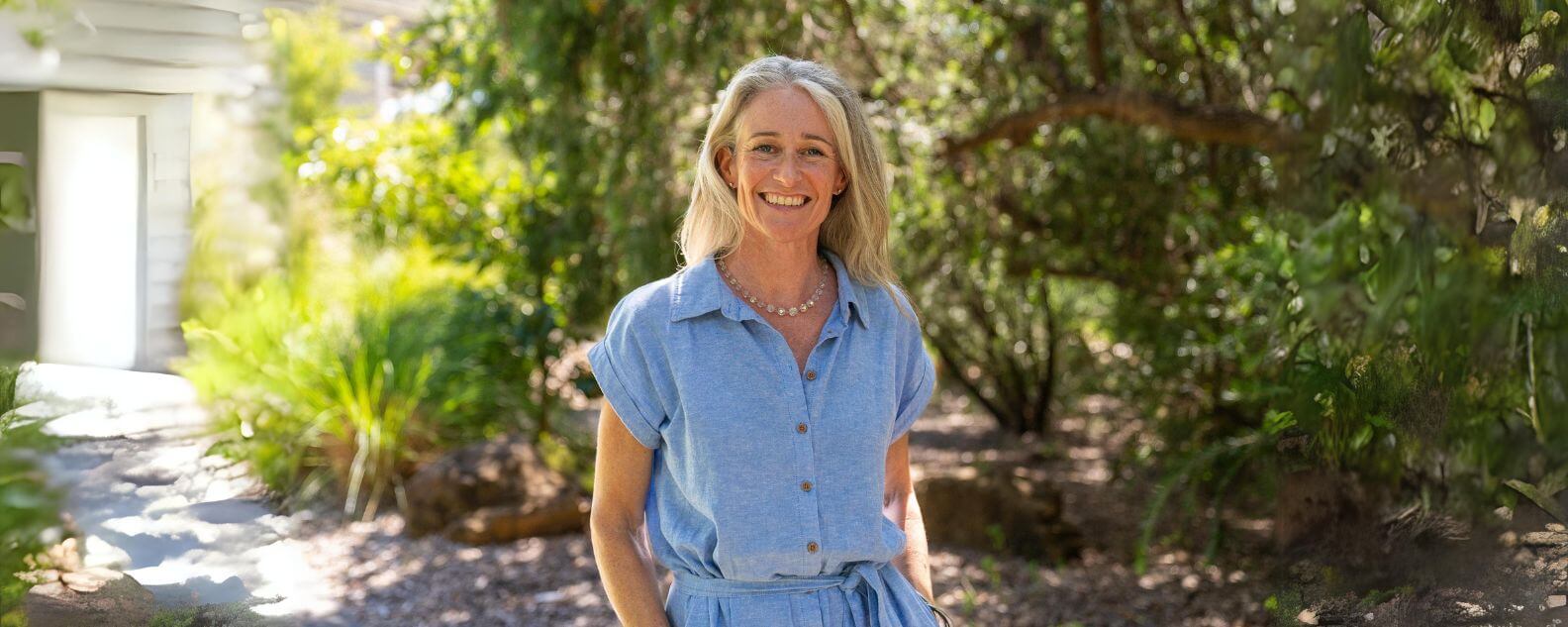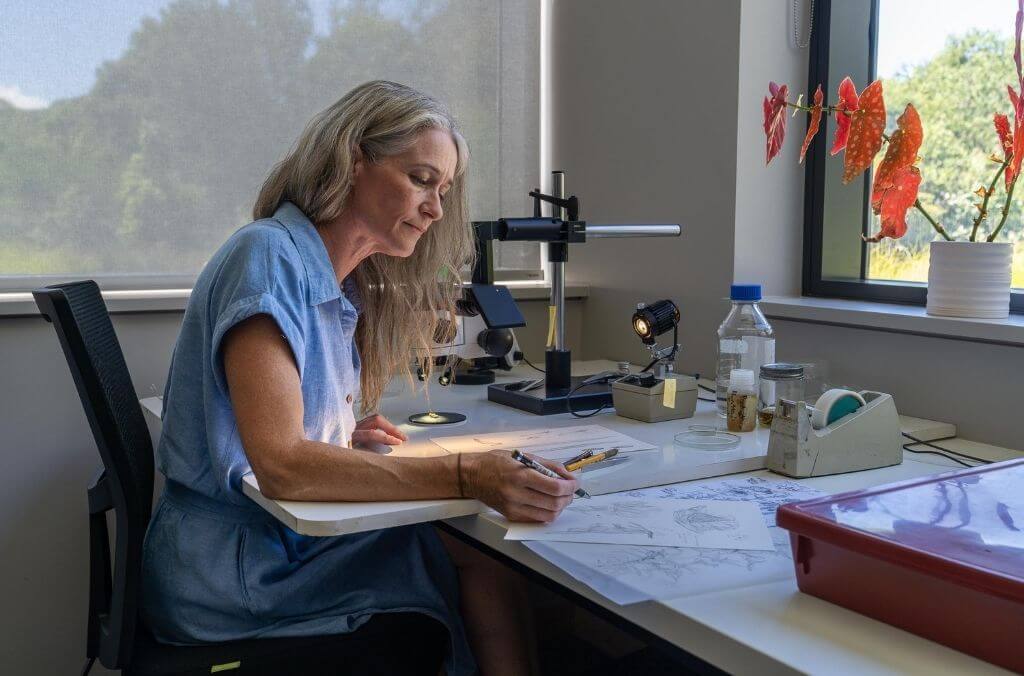Catherine Wardrop
Botanical Illustrator

Catherine Wardrop is a highly experienced Botanical Illustrator based at the National Herbarium of New South Wales at the Australian Botanic Garden Mount Annan. Holding a Bachelor of Arts (Visual) and a Graduate Diploma of Art in Plant and Wildlife Illustration, she has developed a specialisation in black and white scientific illustration, bringing plant species to life through accurate and detailed drawings.
Catherine's career was influenced by her deep connection to nature, fostered by her upbringing in the countryside. She is passionate about the intersection of art and science, recognising the power of visual imagery to transcend linguistic, cultural, and educational boundaries. Her scientific illustrations communicate complex information at a glance, making them universally accessible and aiding in plant identification regardless of language or background.
In her role, Catherine is responsible for illustrating species for the Flora of NSW (PlantNET) online updates, ensuring accurate visual representation for botanists and researchers. She also plays a crucial part in illustrating new plant discoveries or renamed species, advancing the field of botanical science.
A typical day for Catherine involves collaborating with botanists and curators at Herbarium. Under a microscope, she meticulously illustrates plant specimens, both dried and preserved in spirit, capturing every intricate detail. Catherine digitally inks full-plate illustrations that depict the plant's life cycle and crucial identification features. These illustrations are published on PlantNET or provided to researchers for their scientific papers.
Alongside her job share partner, Lesley Elkan, Catherine also takes pride in curating, judging and exhibiting the artworks for the Margaret Flockton Award, an annual competition and event that recognises and showcases scientific botanical illustrations from around the world, and which she won herself in 2006.
With over 25 years’ experience, Catherine cherishes countless memories from her work, all involving the wonderful staff who contribute to the vibrant environment of the Gardens. She feels privileged to capture the beauty and uniqueness of rare plants, observing their perfect structures that have evolved to adapt to specific environments and pollinators.

Her most cherished plant-related memory involves searching for the newly identified Prostantera conniana in a gorge with her colleague Lesley and three botanists. The Prostanthera is named in honour of retiring botanist, Dr. Barry Conn.